Upper Valley residents witness total eclipse
| Published: 04-08-2024 8:01 PM |
ST. JOHNSBURY, Vt. — Scores of Upper Valley residents were among the crowd of about 7,500 people gathered in front of the Fairbanks Museum & Planetarium on Monday to cheer as Vermont Public’s Jane Lindholm announced the arrival of the eclipse’s totality.
As twilight descended on Main Street at about 3:25 p.m., the air temperature dropped noticeably and streetlights blinked on. Lindholm announced the arrival of totality first in Plattsburgh, N.Y., then St. Albans, Vt., and then at 3:28, the crowd in St Johnsbury gasped and then erupted into cheers as the full corona became visible around the edges of the dark shadow of the moon.
A crowd that had been socializing, sampling food truck fare and browsing local vendors all afternoon was suddenly focused as one on the unusual sight.
About 40 students from Thetford Academy, Kimball Union Academy’s entire freshman class, and a group of 40 students and adults from the Hanover High School community made the trip north to experience the eclipse in the zone of totality.
“We’re excited for the adventure, whatever it brings,” Bethany Thompson, a Hanover High Personal Learning Program assistant, said as she boarded the bus on Monday morning.
Laura Mackenzie, a Hanover High School science teacher, arranged for the bus to take students, staff and families to St. Johnsbury.
A geophysicist by training, Mackenzie is in her second year at Hanover and her fifth year teaching high school.
Although she teaches astronomy, the course isn’t running this semester.
Article continues after...
Yesterday's Most Read Articles
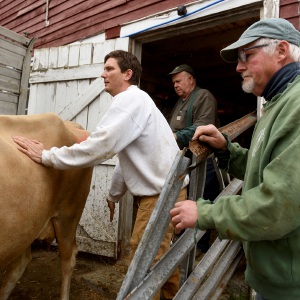 Herd departs Hartford’s last remaining dairy farm
Herd departs Hartford’s last remaining dairy farm
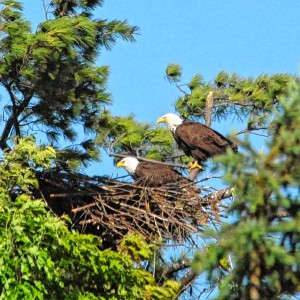 Bald eagles are back, but great blue herons paid the price
Bald eagles are back, but great blue herons paid the price
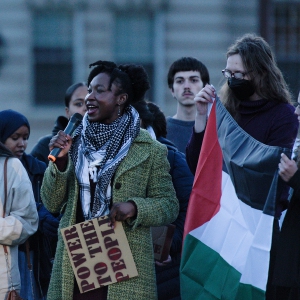 At Dartmouth, hundreds protest ongoing war in Gaza and express support for academic freedom
At Dartmouth, hundreds protest ongoing war in Gaza and express support for academic freedom
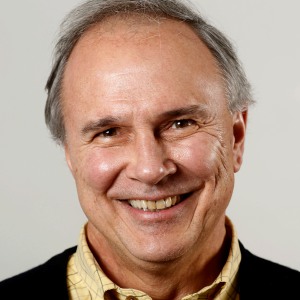 Kenyon: What makes Dartmouth different?
Kenyon: What makes Dartmouth different?
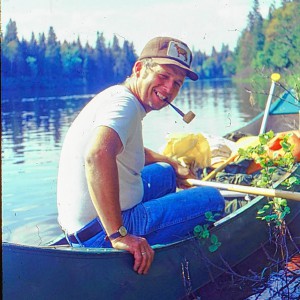 A Life: Richard Fabrizio ‘was not getting rich but was doing something that made him happy’
A Life: Richard Fabrizio ‘was not getting rich but was doing something that made him happy’
“It would have been a great field trip” for that class, she said.
Her husband and son had departed earlier that morning and were sending back traffic reports to help the bus decide on the best route.
Despite concerns about traffic jams and debate about whether to take the highway or back roads, spirits were high as the group boarded.
Traffic on Interstate 91 North was heavy, but moved steadily.
“We took back roads and it was a long bus ride, but we kept moving,” Kimball Union Director of Health Services Melissa Underhill said.
The trip took just under two hours, she added.
Partnering with the Fairbanks Museum, more than a dozen Dartmouth College astronomy students made the trip to staff eclipse-related educational and craft stations outside the museum.
Two astronomy classes came north early Monday morning to prepare and set up for the event, Elizabeth Newton, a Dartmouth astronomy professor, said.
“It’s been a great day,” said Mike Demayo, a first-year Dartmouth student from Hanover, Mass., said. He and classmate Joseph Quaratiello, of Atkinson, N.H., were in charge of the “yardstick eclipse” table and encouraged visitors to guess the distance between the Earth and the moon based on a yardstick-sized scale.
“The kids always guess really low,” he said as a group of young people asked questions and played with the yardstick to create an eclipse-like effect with the model planets. The answer? 240,000 miles, Demayo said, or 30 inches on the yardstick.
Dartmouth graduate student Quinn Casey manned a telescope on Main Street that projected an image of the sun onto a piece of paper, allowing young visitors to observe and learn about sunspots.
“They’ve been amazing,” Fairbanks Museum Executive Director Adam Kane said of the Dartmouth group. “It was a great marrying of their desire to give back” and the museum’s need for assistance.
“We have education staff, but nowhere near what they can do at this event,” and the Dartmouth contingent helped to “maximize the educational value of a once in a lifetime event,” Kane said.
Christina Dolan can be reached at cdolan@vnews.com or 603-727-3208.

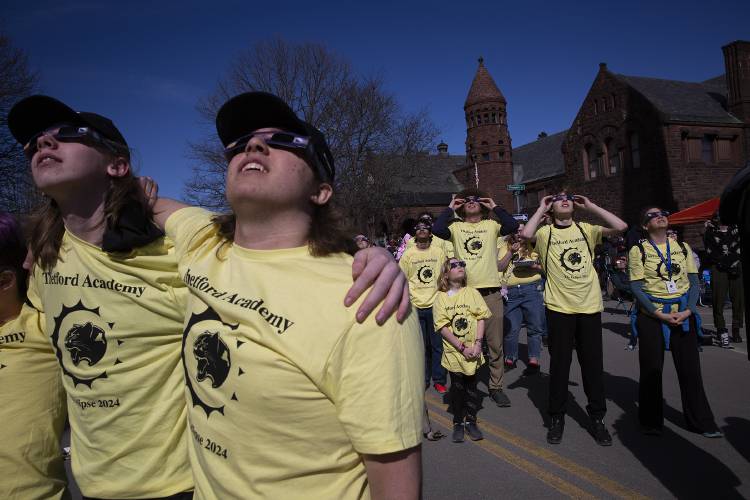
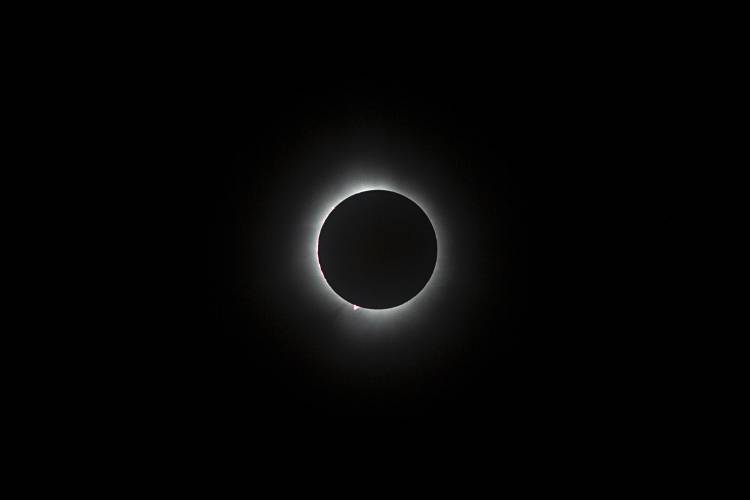
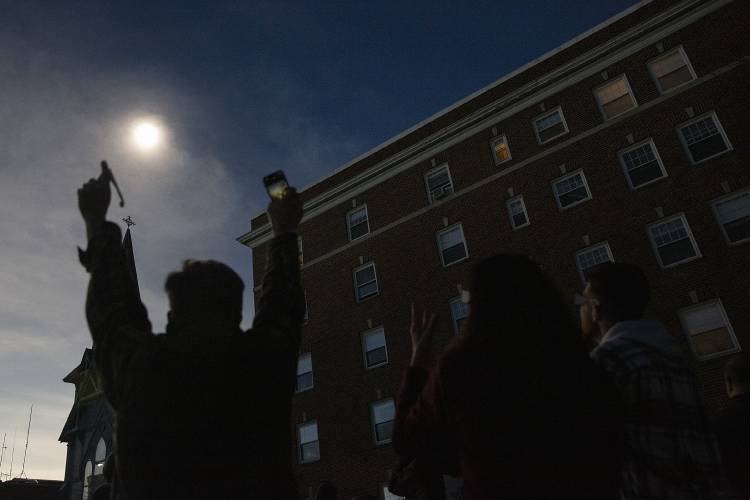
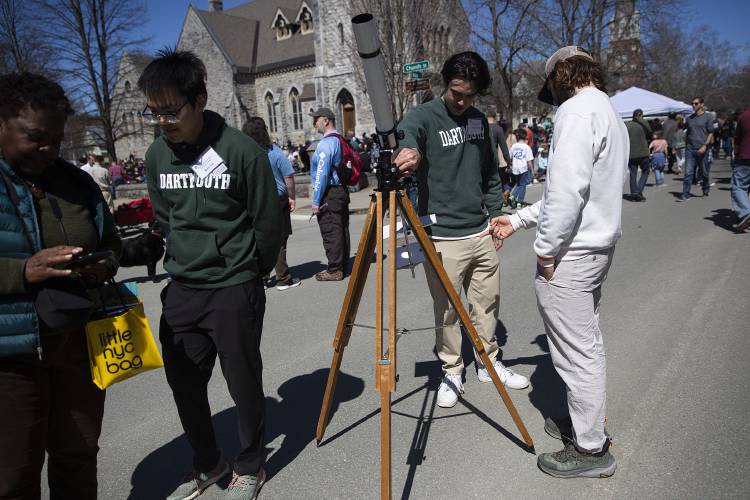
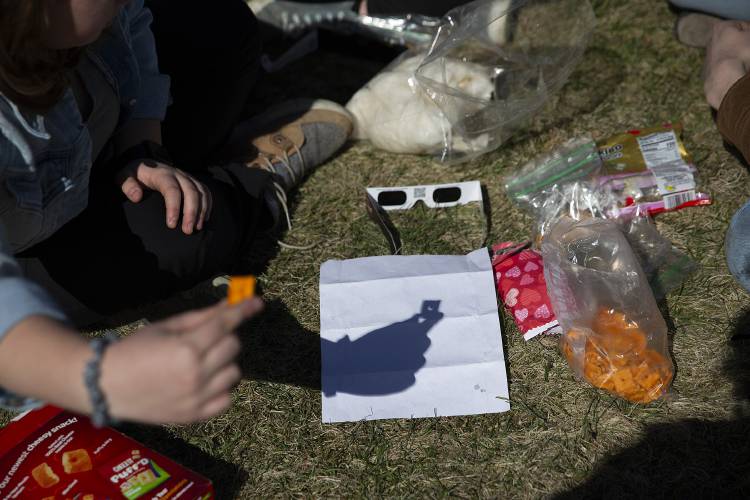
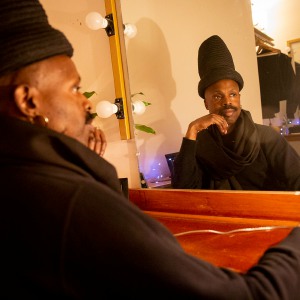 JAG Productions announces closure, citing ‘crisis facing the arts’
JAG Productions announces closure, citing ‘crisis facing the arts’
